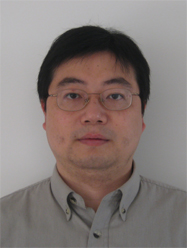General

Students
已指导学生
谢伟 博士研究生 070201-理论物理
玉苏普江·萨拉木 硕士研究生 070201-理论物理
玉苏普江·萨拉木 博士研究生 070201-理论物理
何方成 博士研究生 070201-理论物理
现指导学生
杨明炀 博士研究生 070201-理论物理
李航 博士研究生 070201-理论物理
高正阳 硕士研究生 070201-理论物理

已指导学生
谢伟 博士研究生 070201-理论物理
玉苏普江·萨拉木 硕士研究生 070201-理论物理
玉苏普江·萨拉木 博士研究生 070201-理论物理
何方成 博士研究生 070201-理论物理
现指导学生
杨明炀 博士研究生 070201-理论物理
李航 博士研究生 070201-理论物理
高正阳 硕士研究生 070201-理论物理